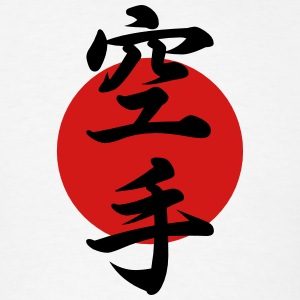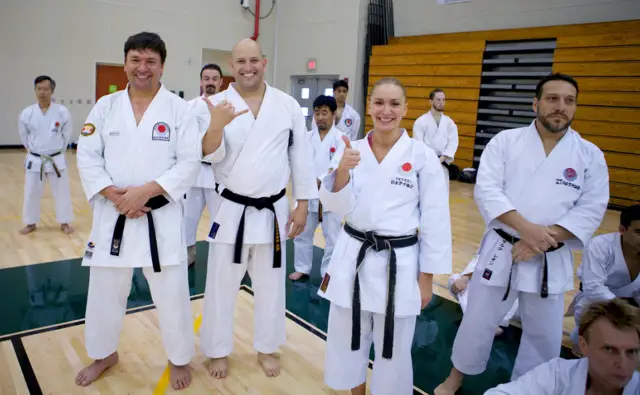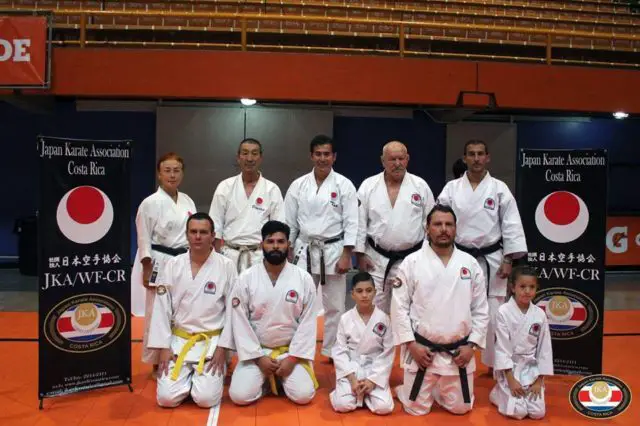Karate is probably Japan’s most known martial art all around the world. The word itself has been translated into English and some other European languages as “empty” (Kara), and “hand” (Te), meaning literally “empty hand”. The term is often used to refer to a Japanese ancient technique consisting of fighting with bare hands only, with no hand-held weapons at all.
In many senses, Karate fighting is a tradition in Okinawa which owes much to the fighting styles of ancient China. The art introduced to Japan in the 1920’s as Karate was known for centuries in Okinawa simply as Te (“hand”, as we said before) to indicate fighting with empty hands as opposed to the use of hands holding weapons. Somewhat later, it started to be referred to as To Te or Tode (the To referring to the Tang dynasty of China (618-907 A.D.), meaning literally “Tang-hand” fighting. And such meaning remained practically unchanged for many centuries, until the beginning of the 20th Century, around the 1920s.
In 1922, Gichin Funakoshi -a grand-master and philosopher- moved to Japan to introduce a profound change on the meaning of karate. In this regard, he had both historical and sociological motivations for the change. But, in a more philosophical sense reflecting Zen principles, he recommended the notion of “emptiness” as implying more than just a hand holding no weapon.

In respect to that, Funakoshi stated: “Just as an empty valley can carry a resounding voice, so must the person who follows the do (Way) of Karate make himself void or empty by ridding himself of all self-centeredness and greed. Make yourself empty within, but upright without. This is the real meaning of the “empty” in Karate. [In this sense] Karate explicitly states the basis of all the martial arts. Form equals emptiness; emptiness equals form”.
Although this change seemed somehow trivial, it caused a deep controversy in Okinawa and Japan, involving deep-seated cultural-identity and sociopolitical issues. Nevertheless, Funakoshi’s establishment of karate as a Do, or “Way”, with a more profound meaning than a strict fighting technique. Actually, it was a philosophical turning point which made possible the assimilation of Karate into the traditional Japanese martial arts.
Karate’s Different Schools
Today, Karate has adopted distinct styles, whether in or out of Japan. This was derived from the fact that an emerging breed of grand-masters, also known as Sensei, had founded different personal schools to preserve -according to their individual perspectives- the traditional principles of Karate.
As excellent examples of those Karate schools were the Mas Oyama’s Kyokushin and Choiro Tani’s Shukokai schools. At the same time, in Okinawa, the dominant schools (Ryu) were Shorin-Ryu, Goju-Ryu, Uechi-Ryu, and Matsubayashi-Ryu. Although there had been Karate demonstrations outside Japan in the late 1920s and 1930s, it actually was in the post-war years that Karate arrived in European and other Western countries.
Much earlier than those decades, the “Japan Karate Association” (JKA) had been formed in 1908, as part of an original attempt to unify such distinct styles in an all-Japanese discipline. Among those styles, the Karate-Do became one of the most important styles of all.
Moreover, in the last 4 or 5 decades, this association has actively assisted other international associations/federations in spreading Karate worldwide, including countries as Australia, Russia, Germany, France, the United States, and Latin America (mainly in Brazil, Perú, Argentina, Venezuela, Mexico and, very especially, Costa Rica).

The Meaning of KARATE-DO
Etymologically speaking, the term Karate-Do means, literally, “the Way of the Empty Hand”. Its fundamental principle states: “The most important goal of Karate is to strengthen people mentally and physically through strong, disciplined training so that better harmony among people is realized. Its ultimate goal is seeking perfection of character”.
Today, main modern Karate-Do’s styles are Itosu-Kai, Shotokan, Goju-Ryu, Shito-Ryu, Shorin-Ryu, Uechi-Ryu, and Wado-Ryu. However, regardless the style, all of them are always taught by a Sensei (grand-master), at a Dojo (training site), on a Tatami (training’s floor). By the way, the sensei’s students are called Senpai.
Similarly, the parts of a Karate-Gi (Karate uniform) are called Uwa-Gi (jacket), Eel (flap), Sode (sleeve), Shita (jacket’s lower part), Obi (belt), and Zubon (pants).
As you can see, Karate is full of words and terms that it might take some time to learn them completely.
Karate’s Benefits for Mind and Body
-Great morals and values.
-Better mood.
–Self-confidence.
-Total body workout.
–Improve cardiovascular health.
-Improve reflexes.
–Healthy lifestyle.
-Weight loss.
-Muscle tone.
JAPAN KARATE ASSOCIATION (JKA) – WORLD FEDERATION (WF) in Costa Rica
With more than 30 years of experience in Costa Rica, the JKA-WF is by far the largest, most important, and prestigious organization, not only in Costa Rica but also in the rest of the world. Additionally, it is the only officially acknowledged Karate association, supported by the Japanese government.

On the other hand, the most important teaching center for Karate-Do in Costa Rica is Honbu Dojo, the official JKA-WF dojo located in Santo Domingo de Heredia. It is here where all activities (belt promotions, events, international grand-masters’ visits, etc.) are coordinated, as well as any other subject related to Karate.
After all, Karate can be practiced by anyone, no matter the age. It will depend on his/her own will and self-discipline.

